OpenSees Cloud
OpenSees AMI
Two Fibers Five Ways
Original Post - 16 Jan 2022 - Michael H. Scott
I occasionally go down rabbit holes of numerical integration. These trips led me to Gauss-Radau integration, all the element integration options available in OpenSees, and, recently, Chebyshev integration.
The latest rabbit hole, described in this post, deals with different ways to integrate section moment-curvature response using only two fibers.
Consider a rectangular cross-section with EPP stress-strain response and no axial load. We seek the moment-curvature response about the local z axis.
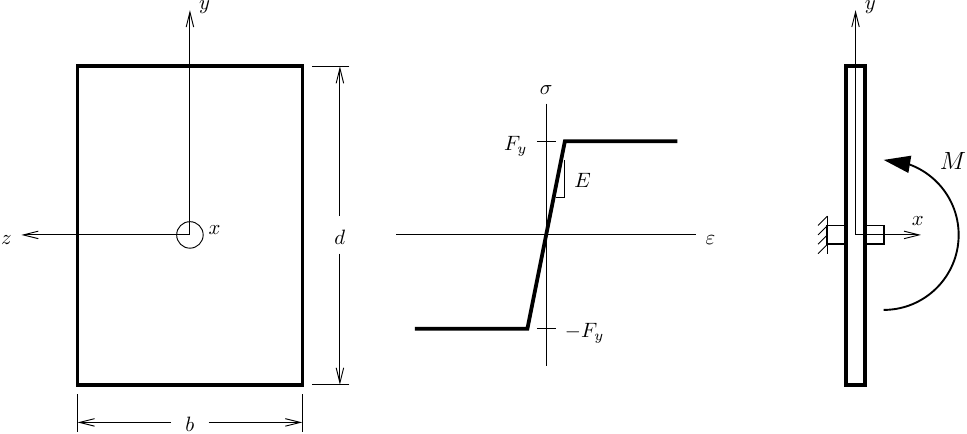
Although not shown here, the exact moment-curvature relationship is easily obtained in closed-form.
To compute the moment-curvature response using only two fibers, I can think of five integration rules that chop this section into two pieces with prescribed sample point locations and areas.
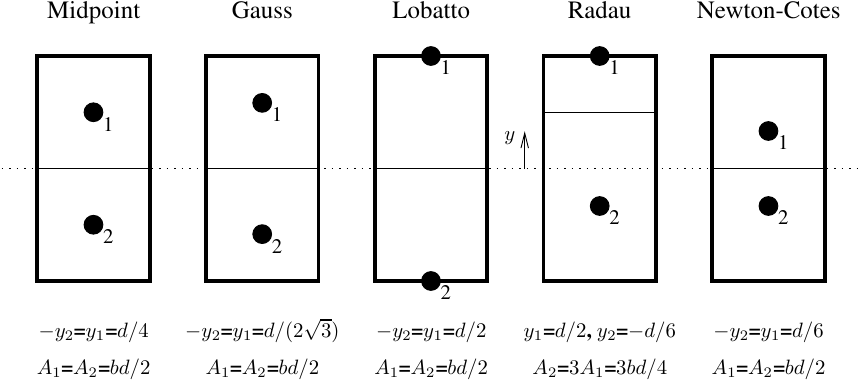
- Midpoint - Two fibers of equal area and sample points at the geometric center of each area. This is the approach implemented for patches in OpenSees.
- Gauss - Map two-point Gauss integration through the section depth. The fibers have equal area but the sample points move away from the geometric center of each fiber.
- Lobatto - Map two-point Gauss-Lobatto integration through the section depth. This approach gives fibers of equal area but the sample points are at the edges of the section.
- Radau - Map two-point Gauss-Radau integration through the section depth. This approach gives unequal fiber areas and asymmetric sample points.
- Newton-Cotes - Map an open two-point Newton-Cotes rule through the section depth. This approach gives equal fiber areas and the sample points are located at 1/3 points through the section depth.
The normalized moment-curvature response computed with each two fiber integration rule is shown below.
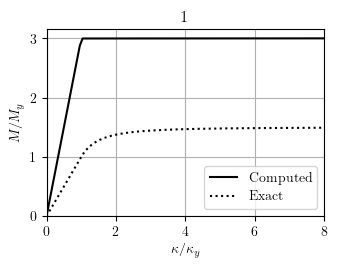
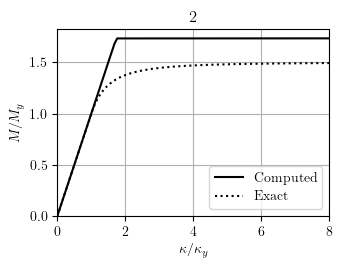
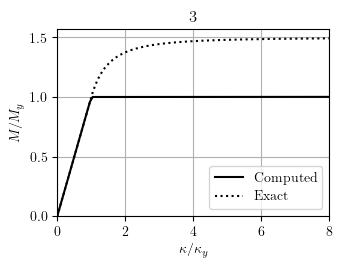
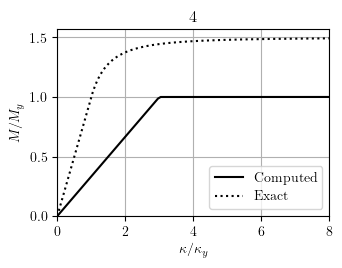
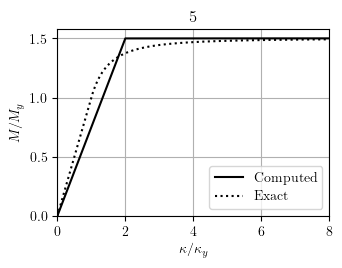
Note that identifying information as to which plot corresponds to which integration rule has been removed. In the comments section below, match the integration rules with the computed results, e.g., “1-Gauss, 2-Midpoint, …”. There are 120 possible matching sequences, so think it through! And feel free to share your logic with your response.
I will explain the correct answers in a follow up post. Responses are due by January 31, 2022.
If you want to try this out for yourself in OpenSees, use the fiber
command to manually define the area and sample point location of
individual fibers. To avoid numerical issues with EPP, I used a very
small strain-hardening ratio in the material stress-strain response. I
also did not restrain the axial DOF for the moment-curvature analyses.
I work on problems related to modeling and nonlinear structural analysis. If these problems are relevant to a current professional project, feel free to reach out.